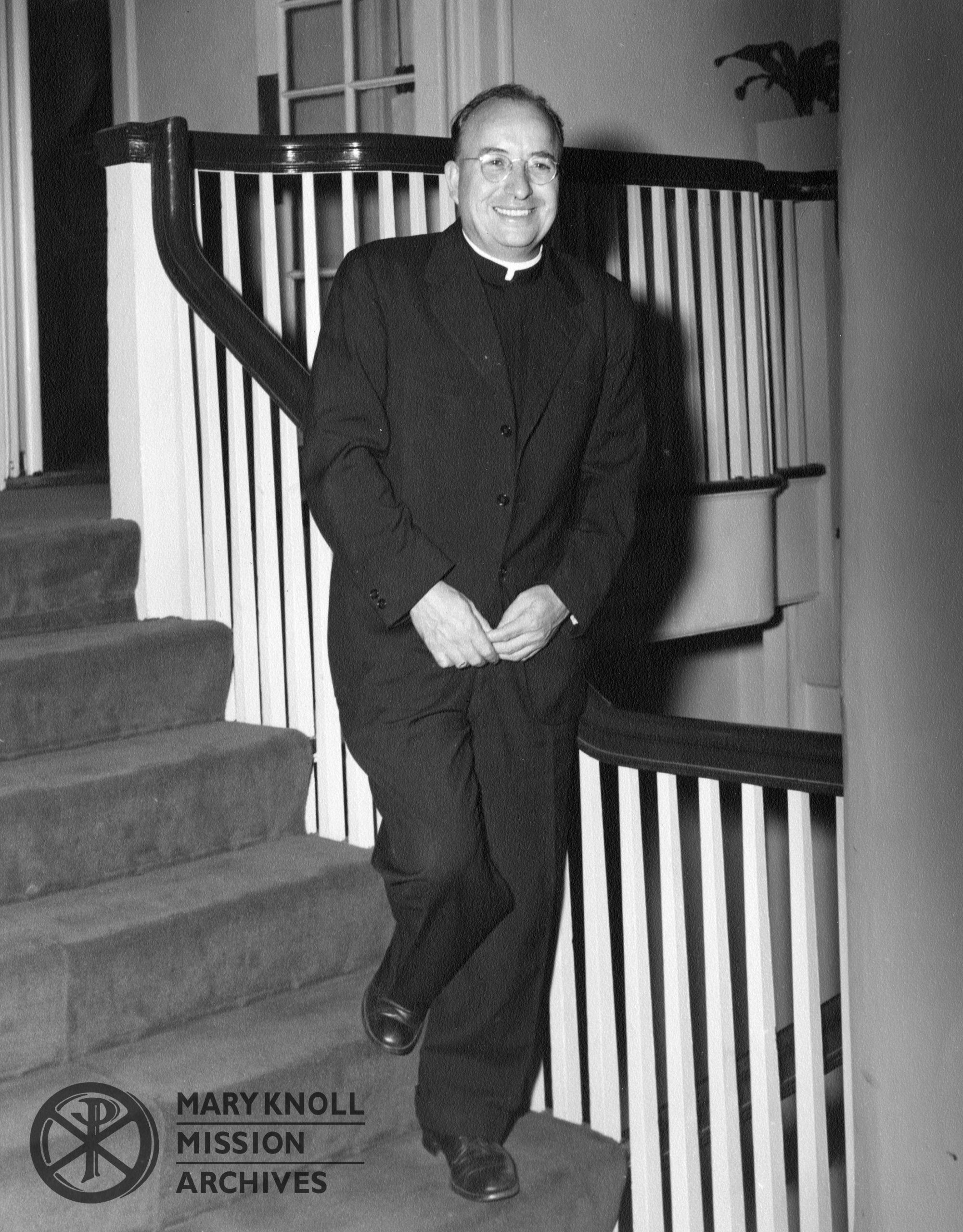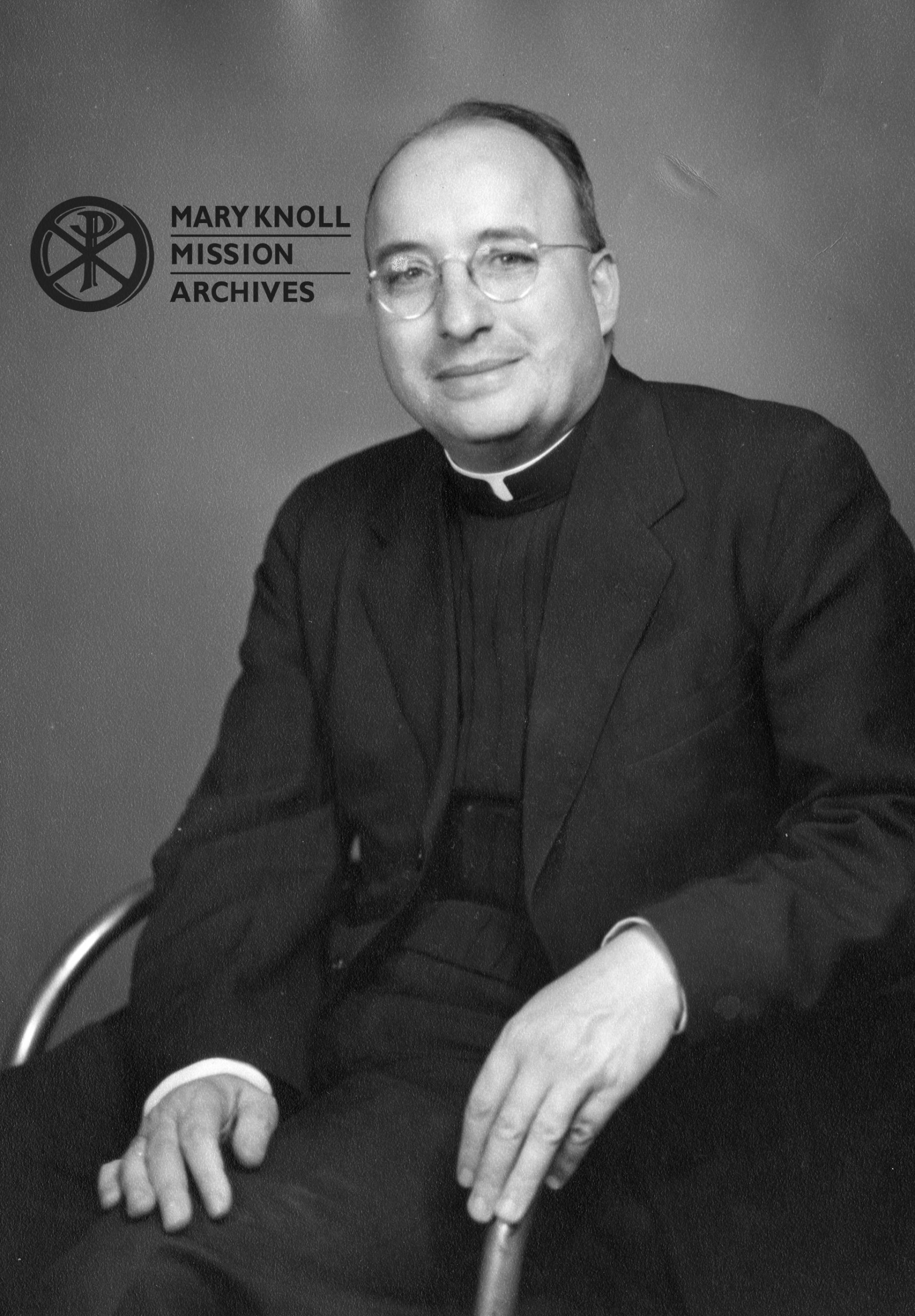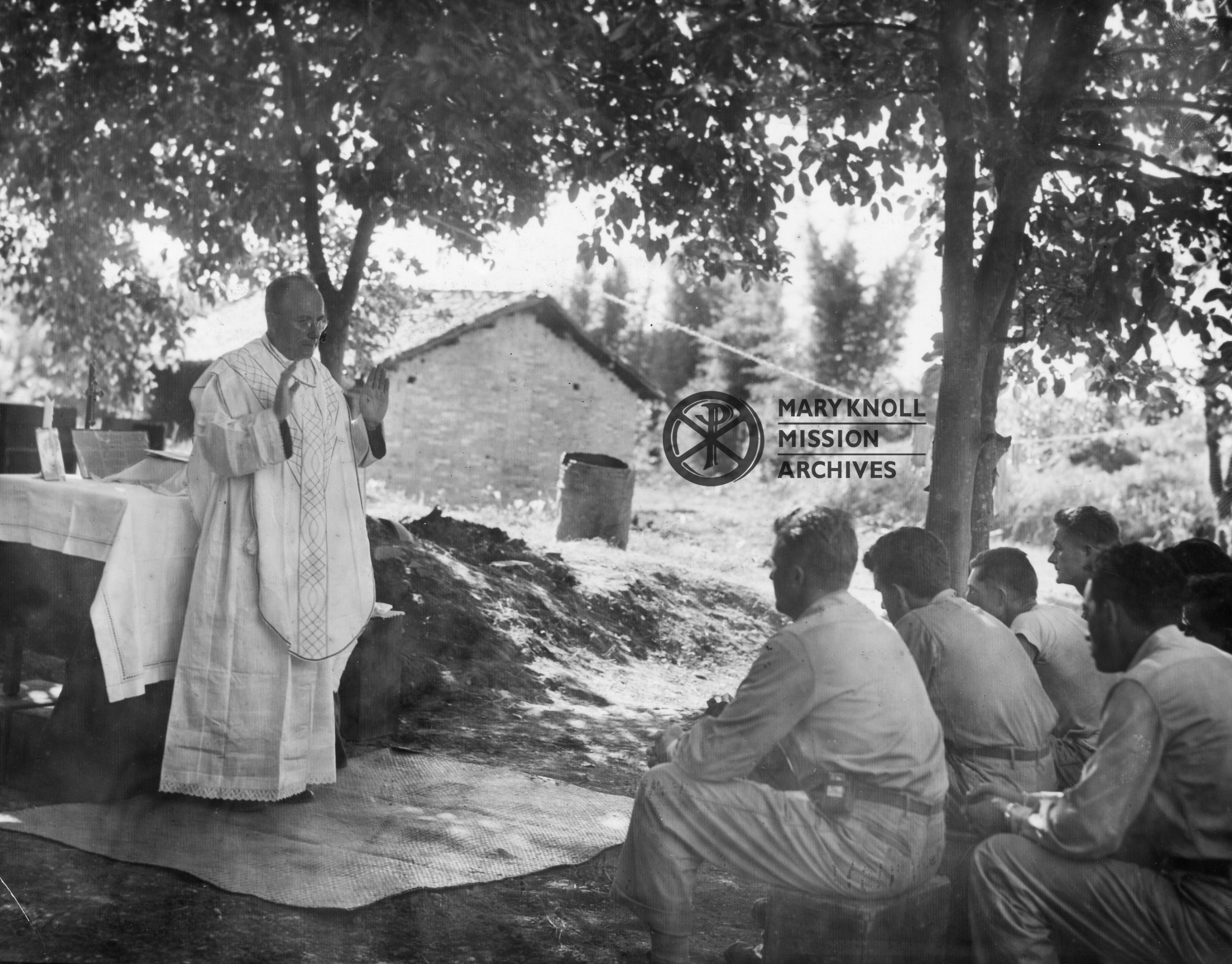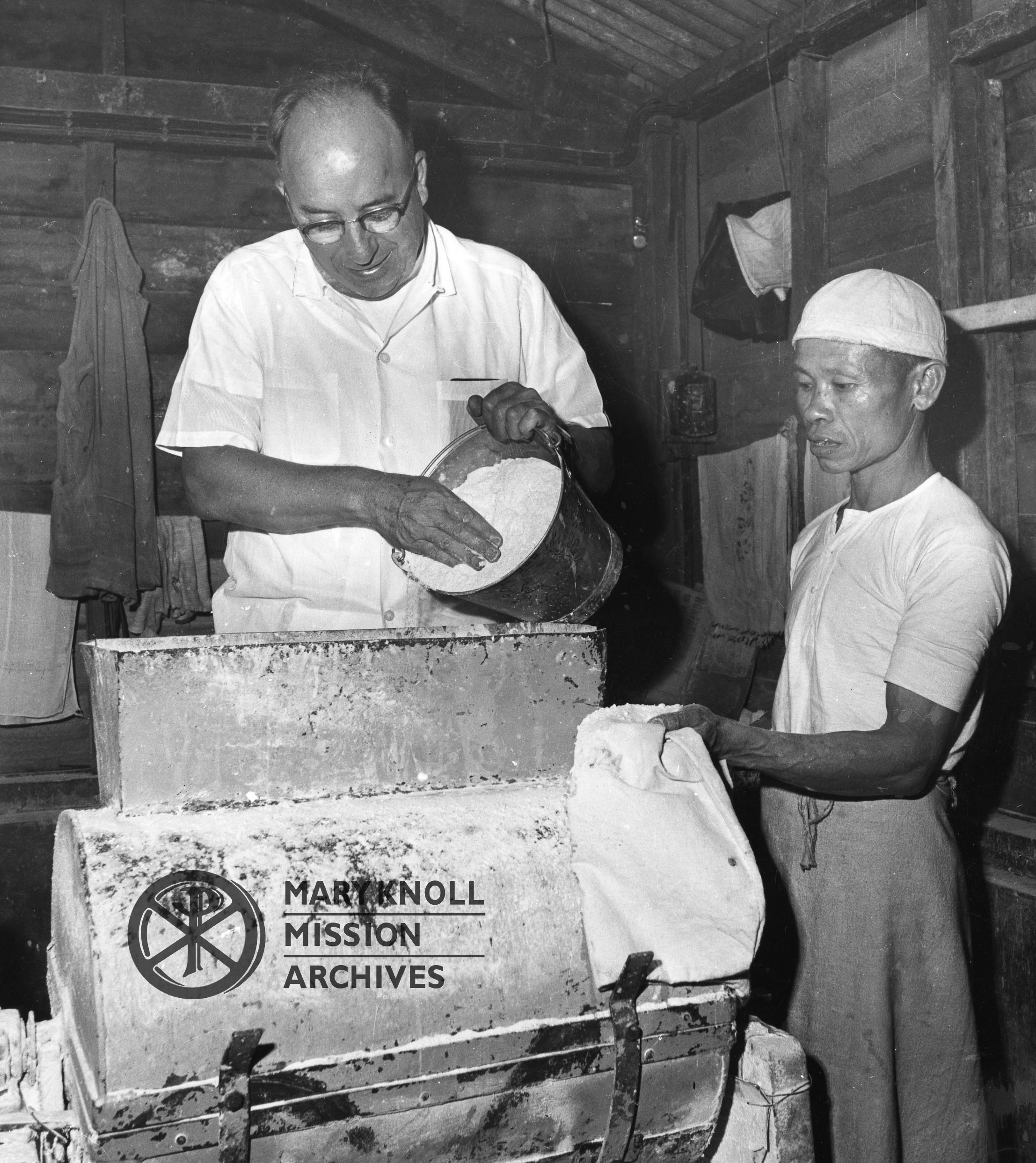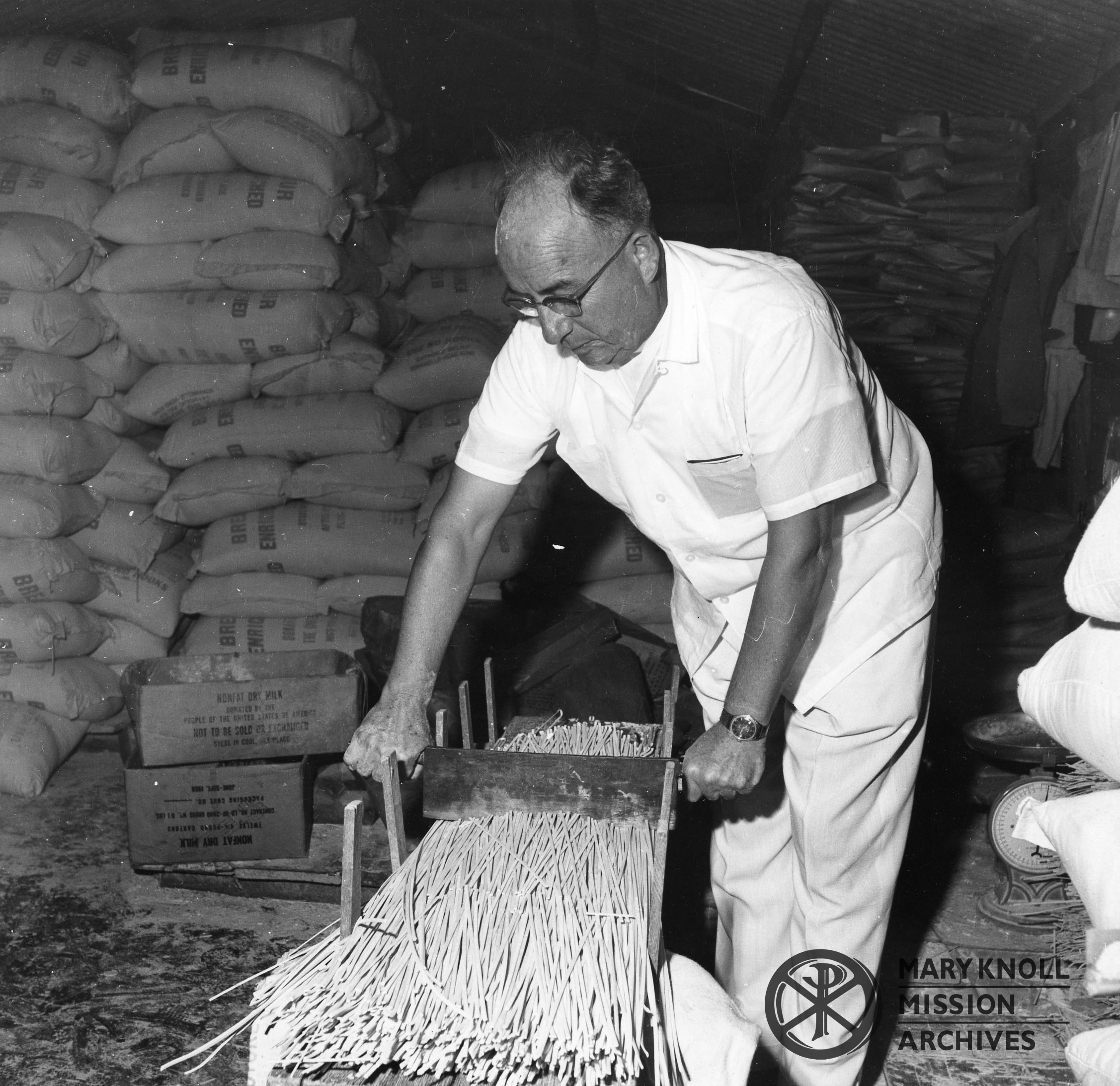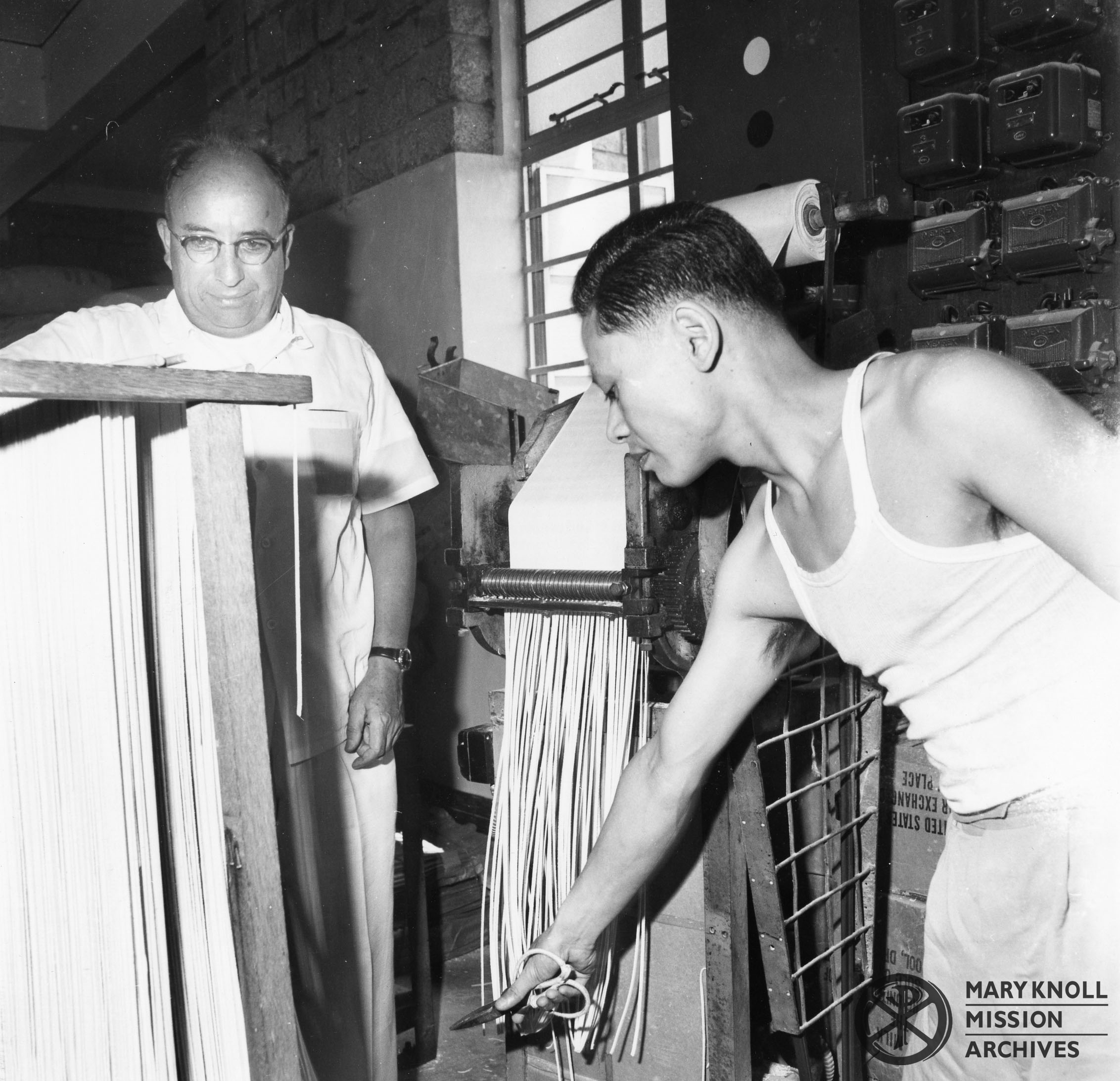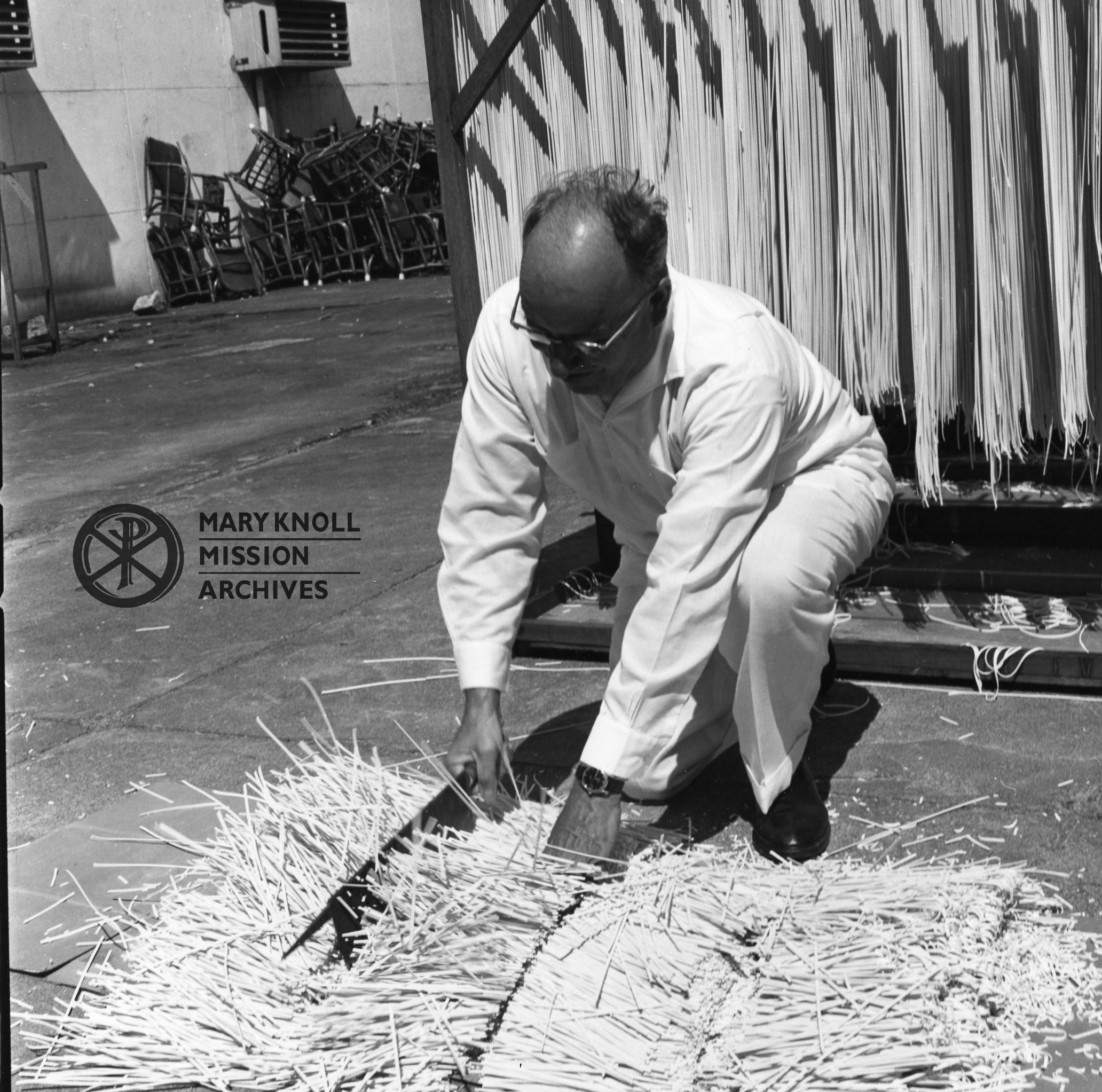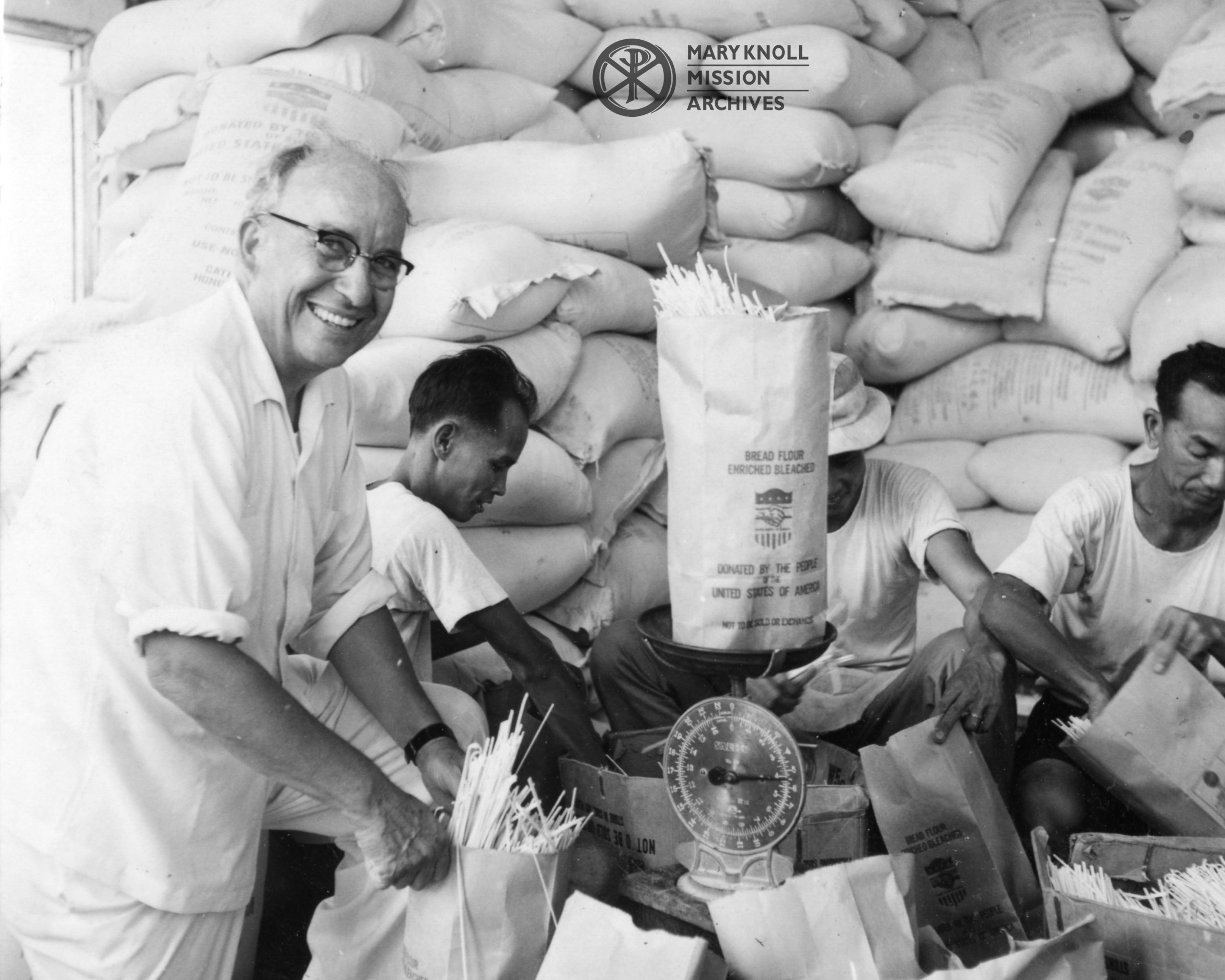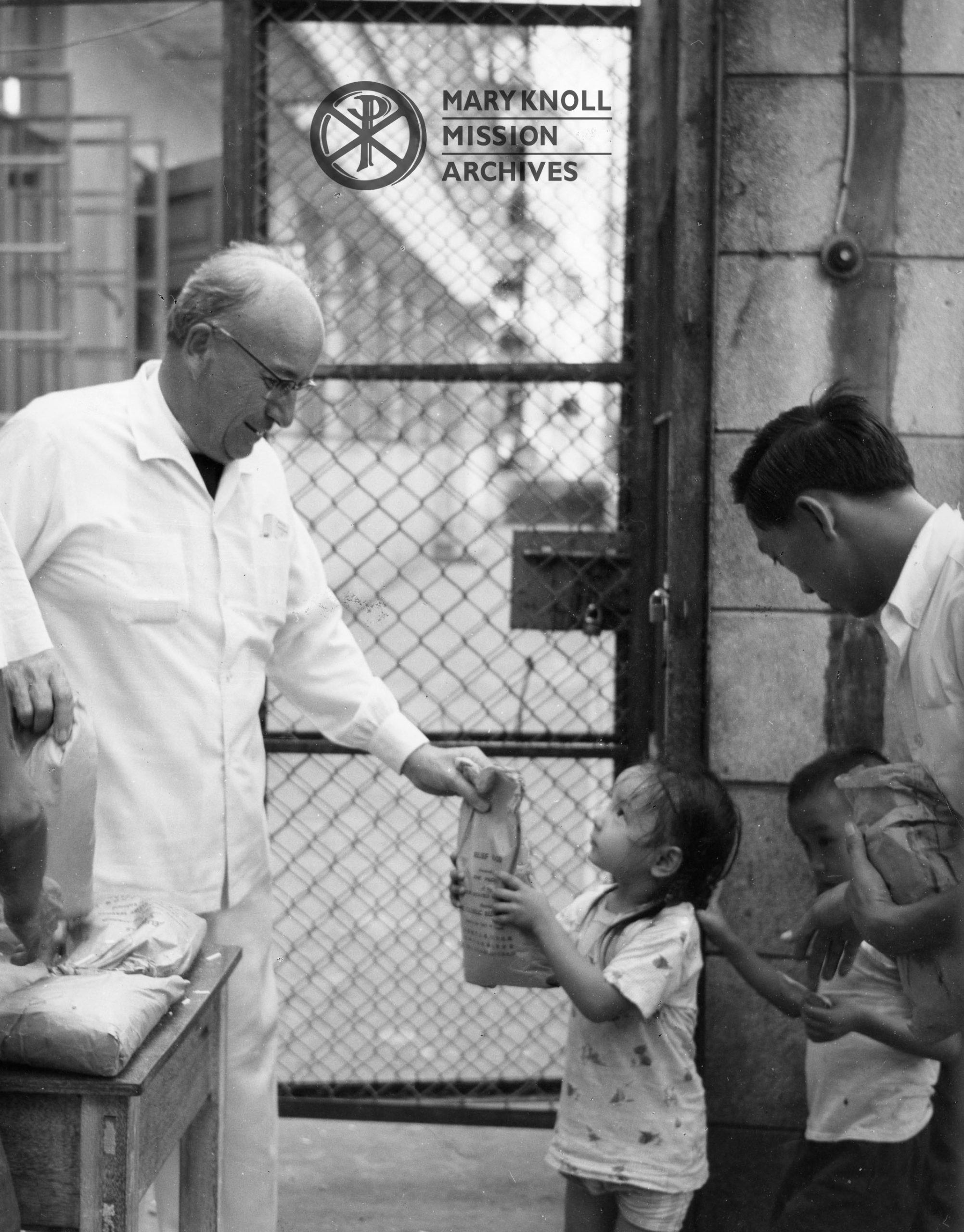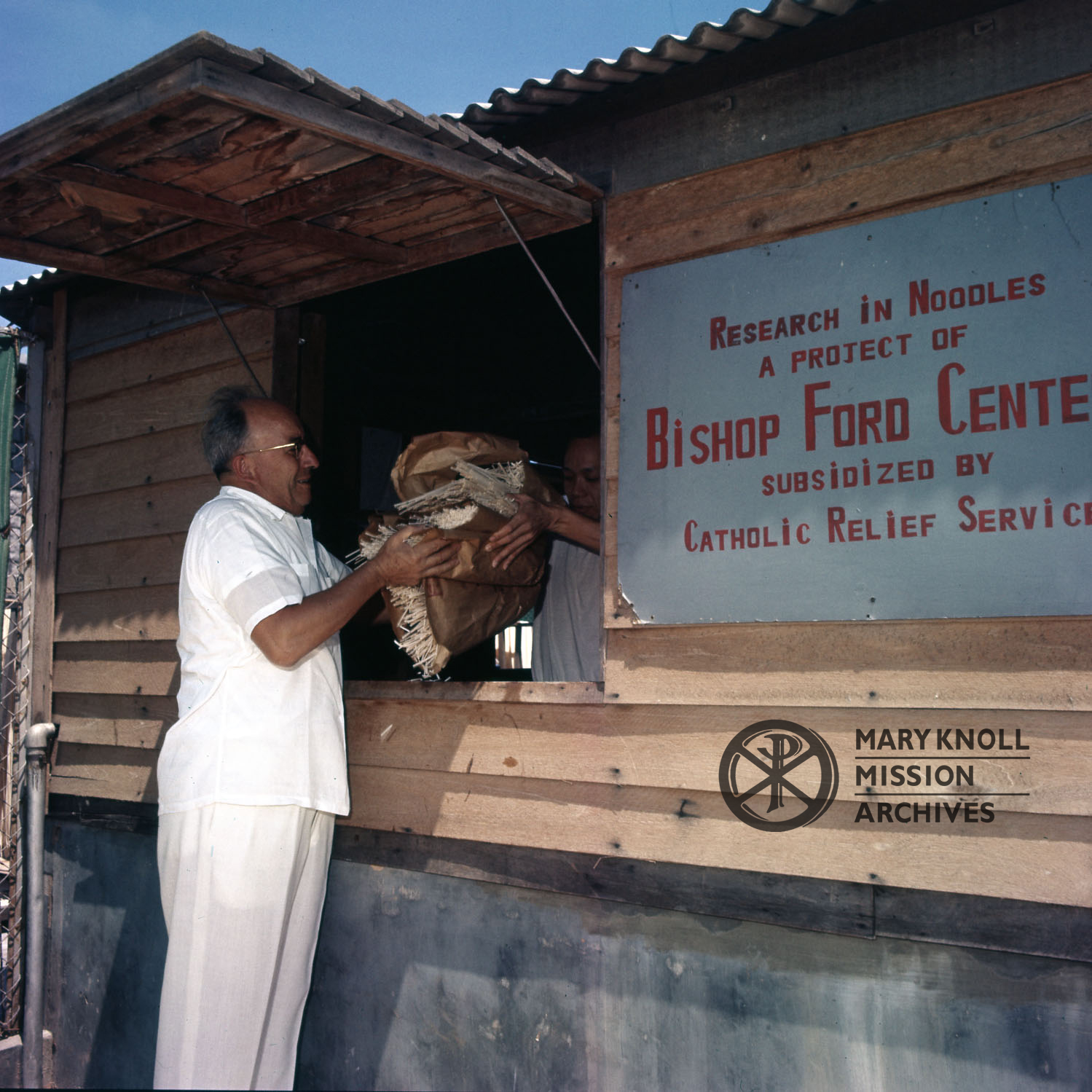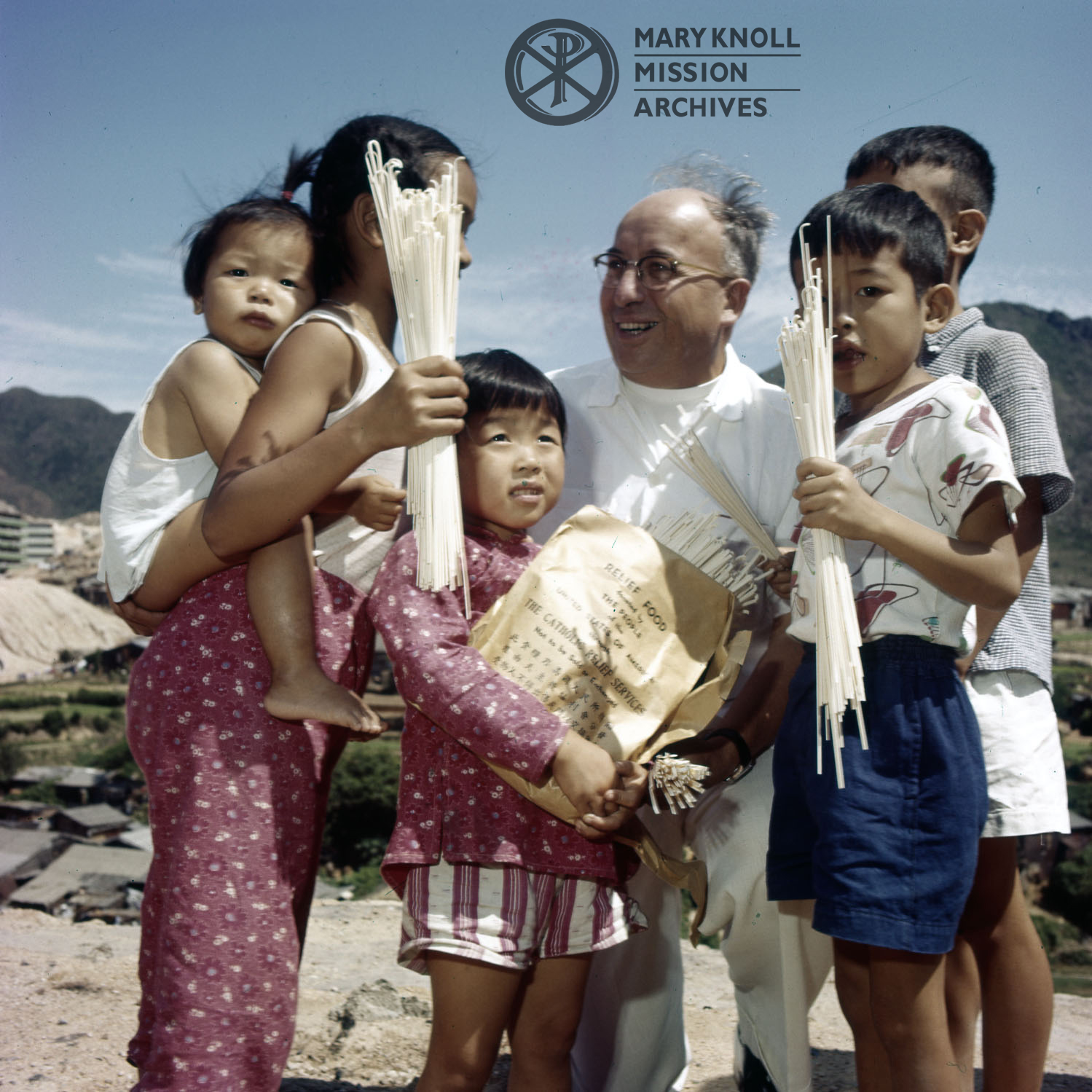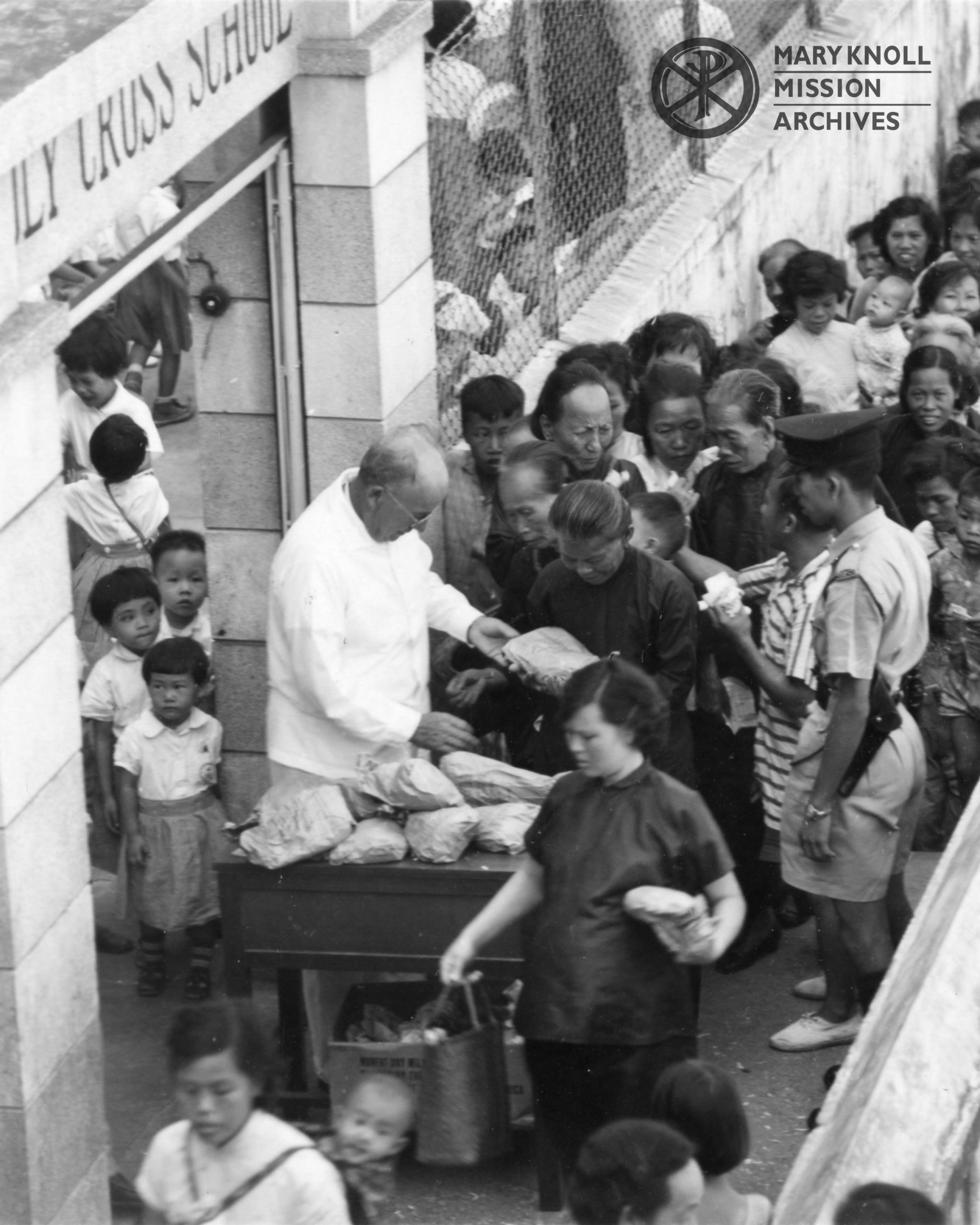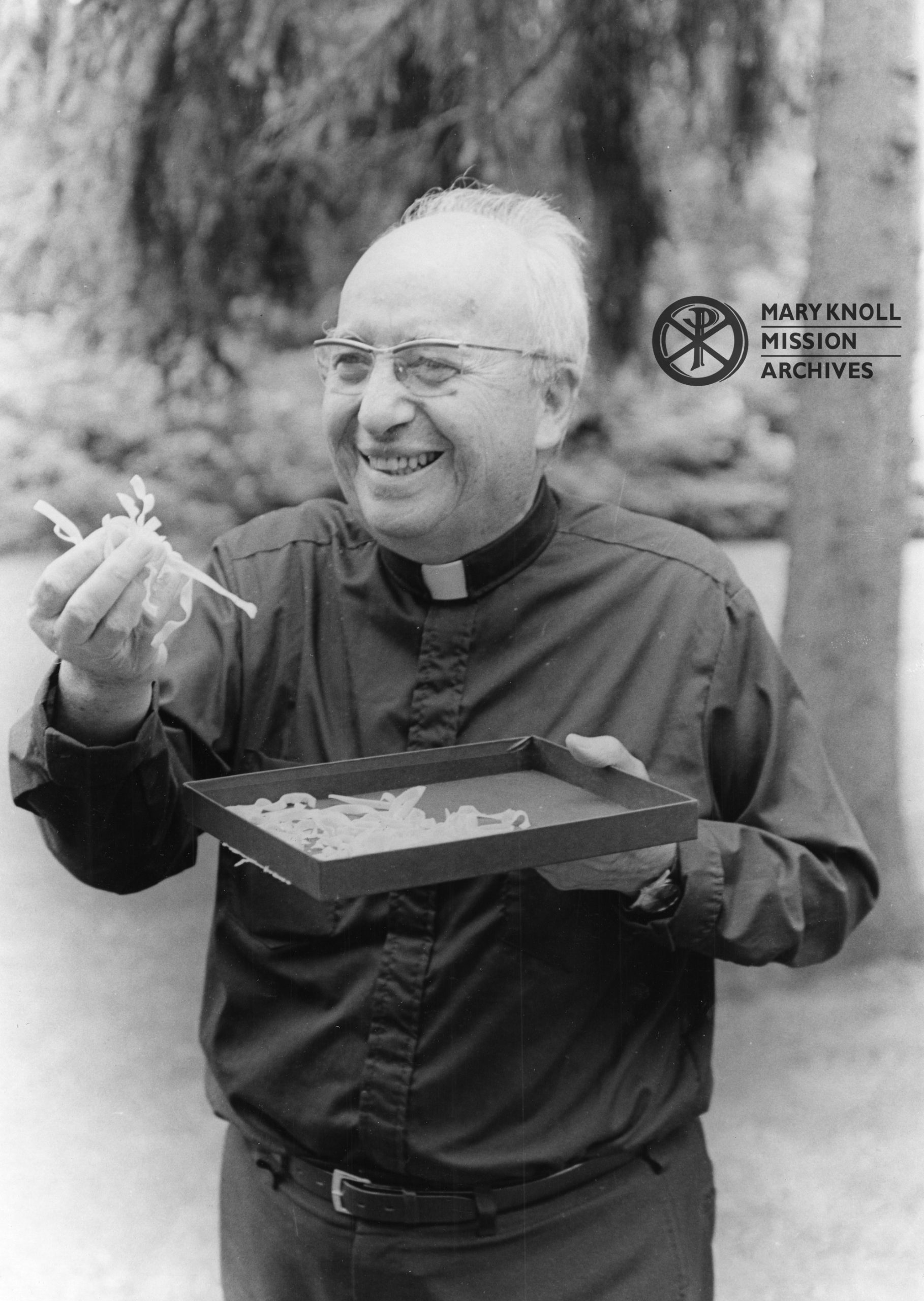A few months ago, a friend and coworker of Monsignor George Carroll called the Archives expressing his gratitude for my blog post regarding Msgr. Carroll’s mission in Korea. He had worked with Msgr. Carroll for many years in Catholic Relief Services and thought the post had done Msgr. Carroll’s service justice. When I asked him who I should feature next, he suggested Monsignor John Romaniello, “The Noodle Priest”!
I thanked him for the suggestion and immediately pulled up Msgr. Romaniello’s biography on our website. Please give it a read for yourself, you will be amazed at how much he accomplished. I was not prepared for just how much this particular Maryknoller got up to in life. To truly encapsulate his life, you would need a novel or two. Instead, I would like to focus on one particular aspect: his moniker as “The Noodle Priest”. Join me as I take you through the journey of Msgr. Romaniello and how he and others fed millions in Hong Kong.
A Missioner’s Start in China
Before we can discuss The Noodle Priest’s work in Hong Kong, we need to set up how he got there. John Romaniello was born on September 11, 1900 in Avigliana, Italy, immigrating to the United States at age 5. His Catholic upbringing led him towards a missioners life, and he joined a young Maryknoll Society in 1917. He was ordained June 17, 1928 and made his way to the Maryknoll mission in China. His missioner career was odd from the start, as he soon found himself amidst a Chinese Civil War. Fr. Romaniello was stationed in the city of Watlam when it was besieged in 1930, witnessing much of the conflict first-hand.
In 1935, Fr. Romaniello was assigned to the Kweilin mission in Wuchow, China. There he would be named the Prefect Apostolic of the mission, earning his Monsignor title. Msgr. Romaniello served dutifully in his role until 1951, when the Communist Revolution forced him from his mission. While he wanted to eventually return to Kweilin, life would have other plans.
Msgr. Romaniello spent the next several years jumping from assignment to assignment. He served a short stint in Italy, as well as a part of the Maryknoll Faculty. He always seemed to keep busy and hop around, a prelude for his future. In 1956, Msgr. Romaniello was asked to take over the position of Director of Catholic Relief Services in Hong Kong, which he accepted.
How to Make a Noodle
On a summer day in 1957, Msgr. Romaniello walked amongst the crowded refugee camp in Hong Kong. He observed the hunger in the camp, one that US food surplus should be solving. However the wheat flour, cornmeal, and powdered milk being sent to Hong Kong more often found itself on the black market. Why is that so? Msgr. Romaniello wondered.
By speaking with the refugees himself, he realized the problem. Most of the refugees did not have the time, energy, or equipment to properly cook with the strange ingredients. Instead, they exchanged the relief supplies for money to buy more familiar ingredients, such as rice or noodles. Eureka! He just needed to convert the wheat, cornmeal, and milk into noodles.
Msgr. Romaniello investigated how to turn his idea into reality. A local noodle shop showed him machines and taught him the basic process for making and sun-drying the noodles. Father Michael McKeirnan offered a space behind his school where a factory could be set up. The only thing left was to devise a suitable recipe, for which he turned to Maryknoll Colleague and Amateur Cook, Fr. Howard Trube.
Fr. Trube had been supporting the relief work in Hong Kong since 1952, founding the Bishop Ford Center. He worked tirelessly to devise a suitable recipe to pass through the noodle-making machine. He realized the cornmeal, a much harder ingredient than flour, needed to be softened first. With a bit more experimenting, he found his recipe: 75 percent flour, 20 percent softened cornmeal, 5 percent milk. With this final step, Msgr. Romaniello’s noodle project was in operation.
To the left you can see the full noodle making process, demonstrated by Msgr. Romaniello.
Feeding the People
By October of 1957, Msgr. Romaniello’s noodle machine was producing 500 pounds of noodles a day. Packaged in 5 pound bags, he printed on each “Donated by the People of the United States. Not to be Sold or Exchanged“. The noodles he made originated from the generosity of the American people, and he did not want to see the noodles on the black market. Appreciative of the thought and generosity, the refugees ensured each bag was kept out of the black market.
The success of Msgr. Romaniello’s project was thanks to his ability as an administrator. While he launched the noodle project, he relied on others to aid in distribution and expansion. Msgr. Romaniello was most often found fundraising, advocating, and spreading the word of his project. This allowed him to expand the operation rapidly, turning out 7,000 pounds of noodles a day by 1959. Through this project Msgr. Romaniello received his moniker, “The Noodle Priest”, from the refugees, a name that would gain international acclaim.
The Noodle Priest
The Noodle Priest, the Noodle King, the Pasta Padre: all names used to describe Msgr. Romaniello and his relief work. As mentioned previously, Msgr. Romaniello was more of an administrator and advocate than a noodle maker. He would bounce back and forth between Hong Kong and the United States, raising money and acquiring the means to expand his operation to feed millions. His force of personality and infectious spirit made him particularly suited for fundraising and raising awareness. Just one example is a tune Msgr. Romaniello would sing at the drop of a hat, to the tune of Sugartime by the McGuire Sisters:
“Noodles in the Morning,
Noodles in the Evening,
Noodles at suppertime;
Be my daily noodle
And feed me all the time.
Boil ’em in the morning,
Fry ’em in the evening,
Cook ’em anytime;
Just try Romy’s noodles
You’ll choose them every time.”
International Acclaim
In addition to fundraising, Msgr. Romaniello made several appearances in the pop culture of the time. Most interesting is his appearance on the popular gameshow “To Tell The Truth“. He was featured in the episode that aired on June 25th, 1962, where he fooled three of the panelists and won $750. As well, he was given another $1,000 from Mrs. Mimi Weeks whom appeared on the show “Queen For A Day“. Msgr. Romaniello also wrote several manuscripts, one of which was published as a novel in 1956. The book, Bird of Sorrow, was written regarding the experience of the Chinese people following the revolution.
With all this acclaim, I think Msgr. Romaniello’s biggest impact was in those he inspired. The Archives has hundreds of news clippings featuring dozens of stories about the factories, projects, and relief operations that followed in the Noodle Priest’s footsteps. Sister Sainte Adeleide of the Missioners of the Angels of Sherbrooke, MN became known as “The Noodle Queen” for opening similar noodle factories in Lima, Peru. The US Navy conducted Operation Handclasp to transport a carrier’s worth of supplies to Hong Kong in 1958.
Finally, Msgr. Romaniello was a huge inspiration for the Catholic Relief Services. He is remembered as one of the “Four Horseman of Maryknoll” in a podcast celebrating the 75th anniversary of Catholic Relief Services. Alongside him are Monsignor George Carroll, Father Paul J. “The Duke” Duchesne, and Father Francis J. O’Neill.
Monsignor John Romaniello, The Noodle Priest, passed on October 22nd, 1985. The simple words of a Regional Superior perfectly sum up his life: “He was an amazing man.” His personality was endearing, his humor great, his faith strong, and his efforts tireless. I have captured just one aspect of his life here, an incredible one to be sure, but just one.

